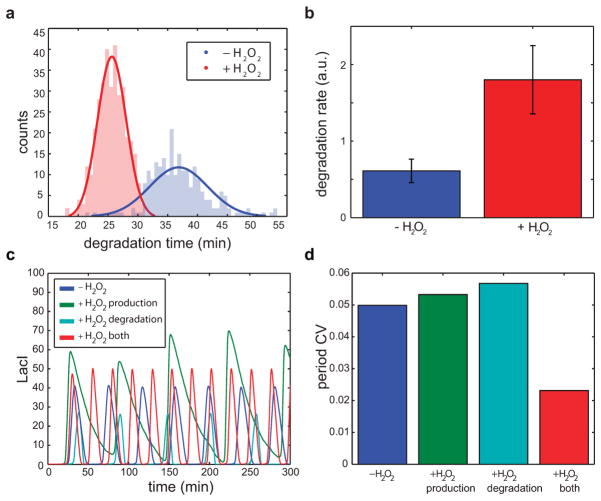Extended Data Fig. 4.
H2O2 increases degradation rate by ClpXP that, in combination with transcriptional increase at the lux promoter, decreases variability in the oscillator period. (a) There is a significant decrease in the degradation time due to H2O2 (experimental). (b) This is due to effective increase in ClpXP degradation rate (experimental). (c) H2O2 activation of lux promoter alone would only increase the amplitude of quorum clock oscillations. Similarly, H2O2 -dependent increase in ClpXP activity results only in steeper degradation and longer inter-pulse duration. Combination of the two effects leads to increase in amplitude and decrease in inter-pulse duration, which matches experiments (model). (d) Individually the two H2O2 effects do little to lower the quorum clock period CV, which is reduced when both are present (model).

